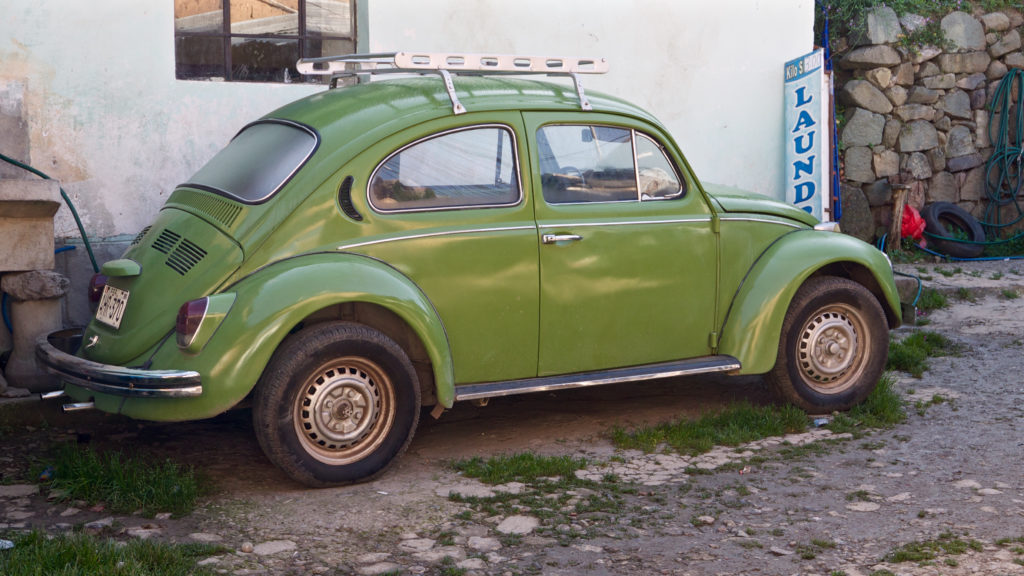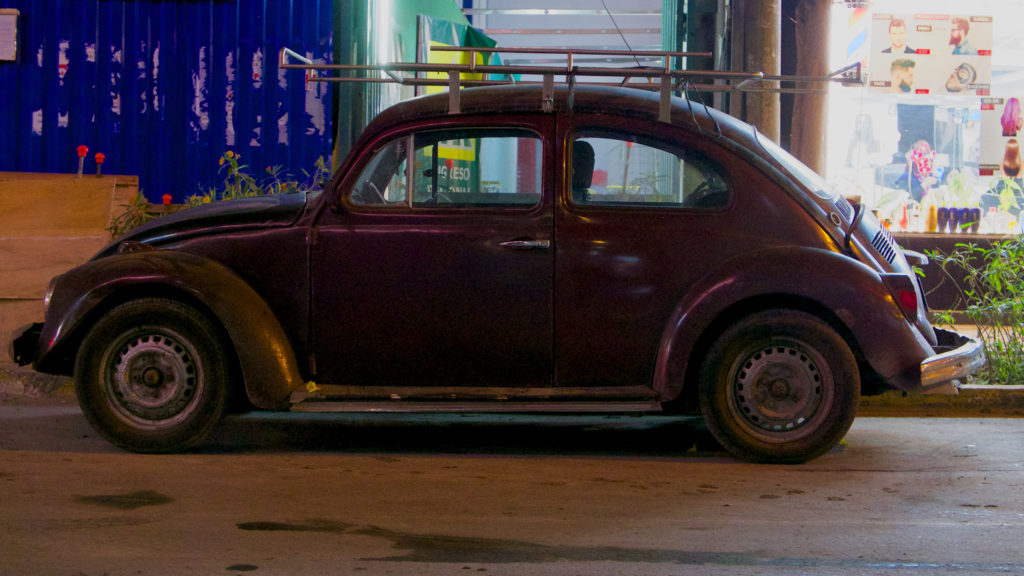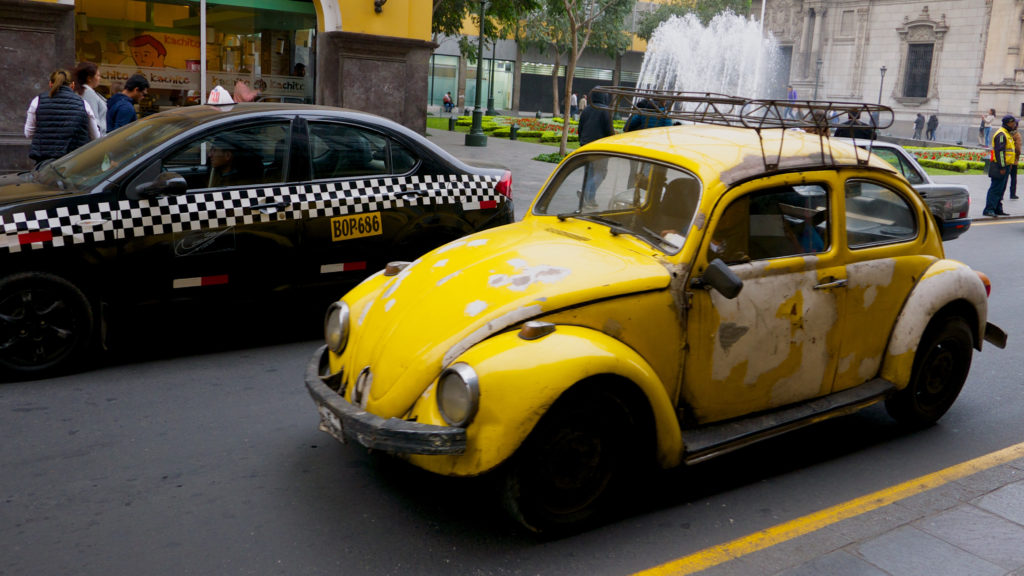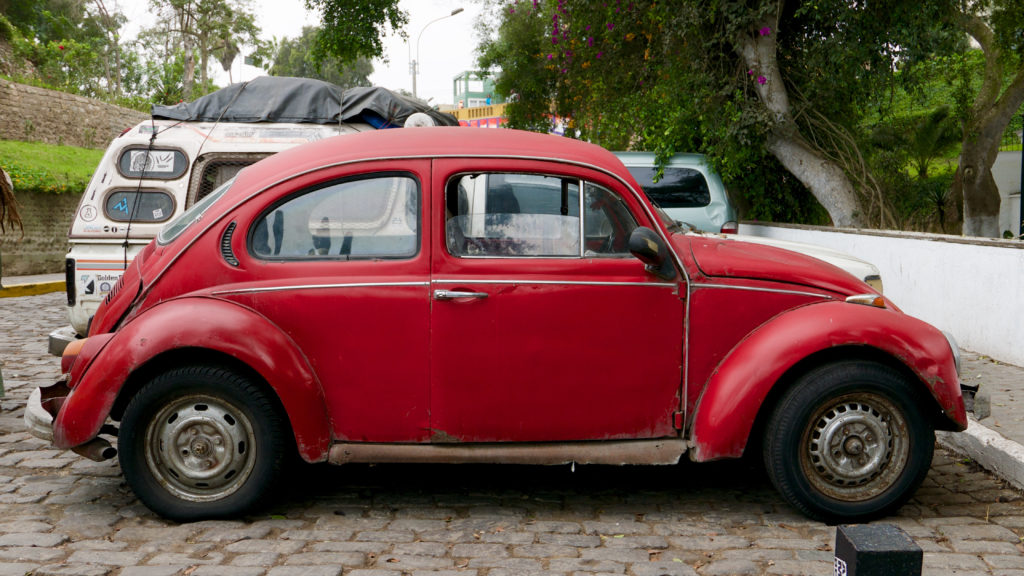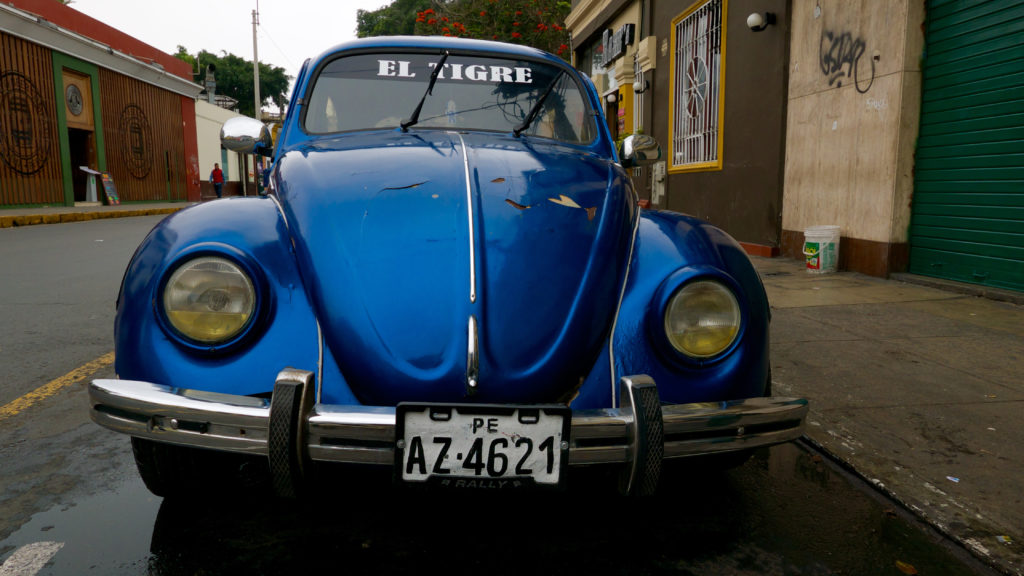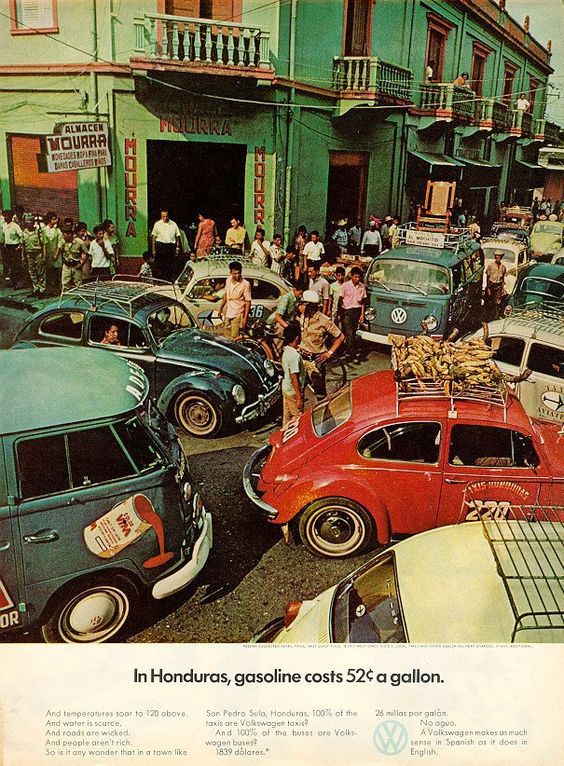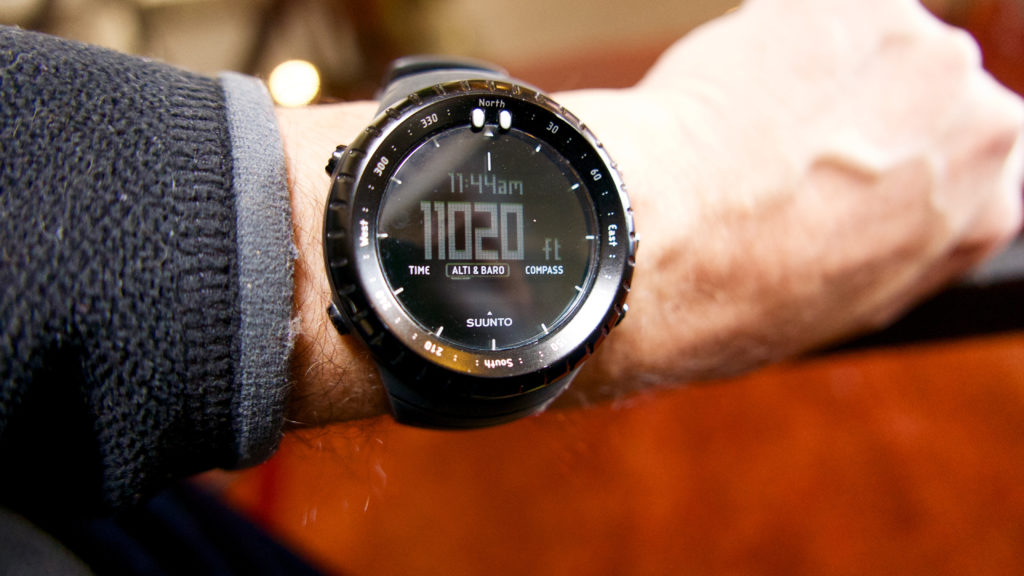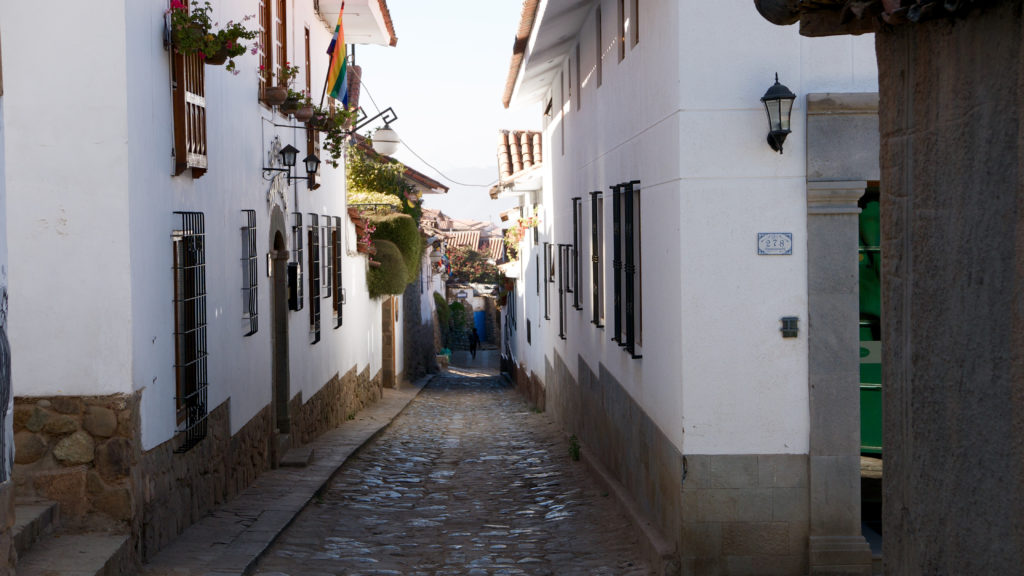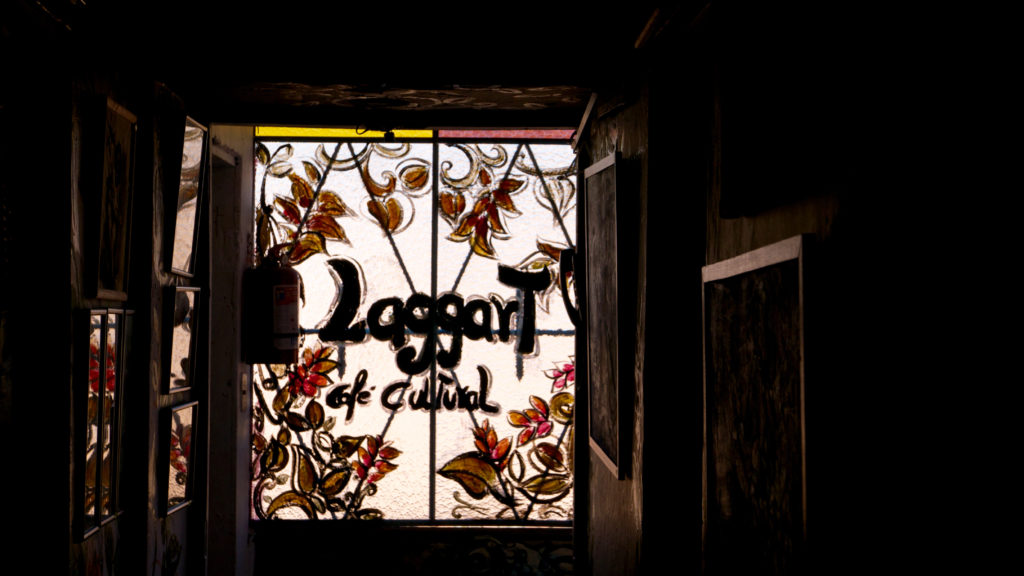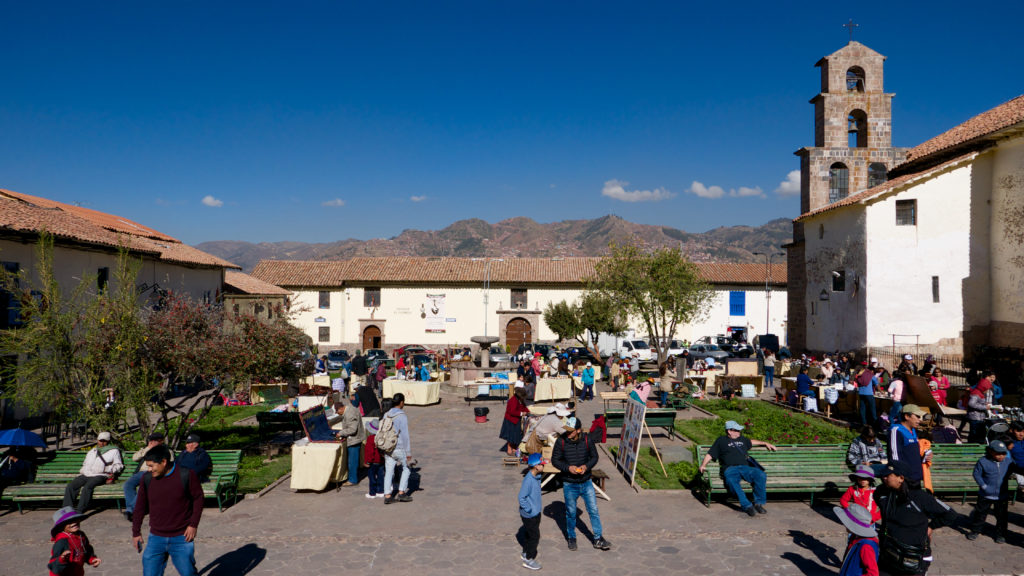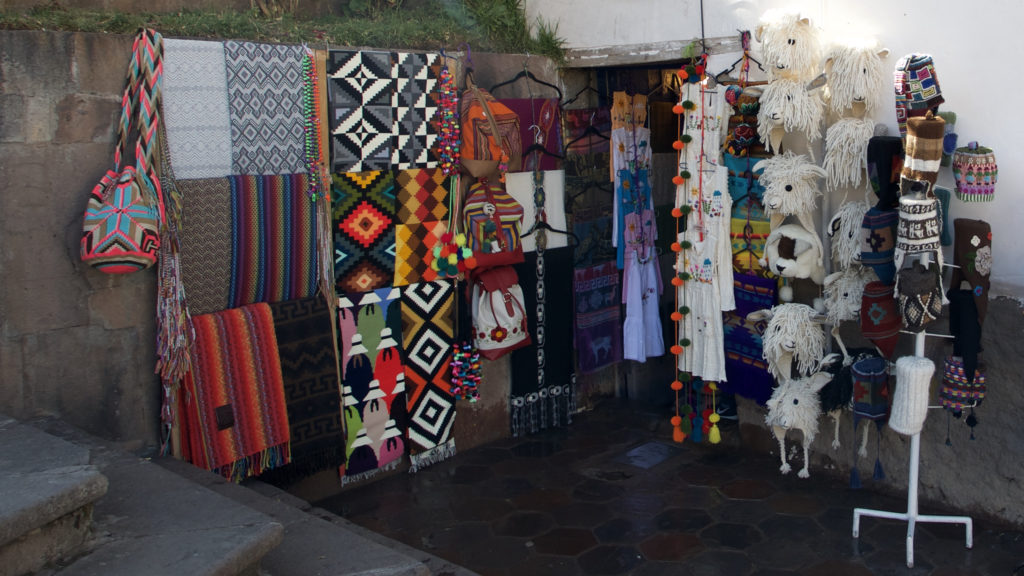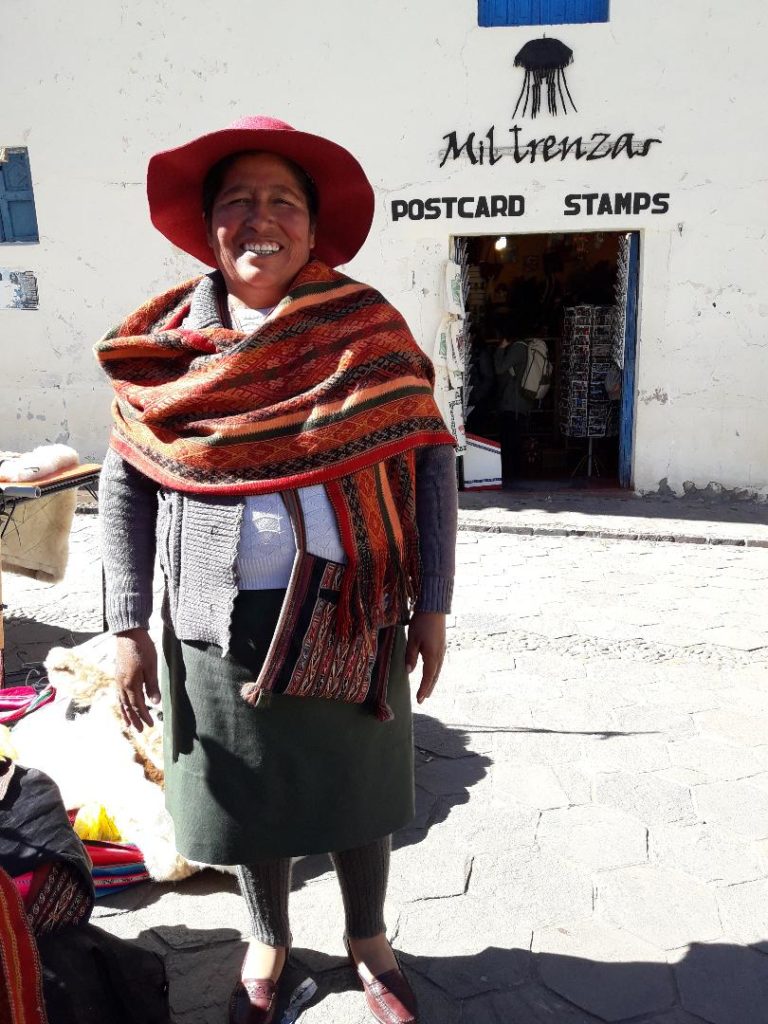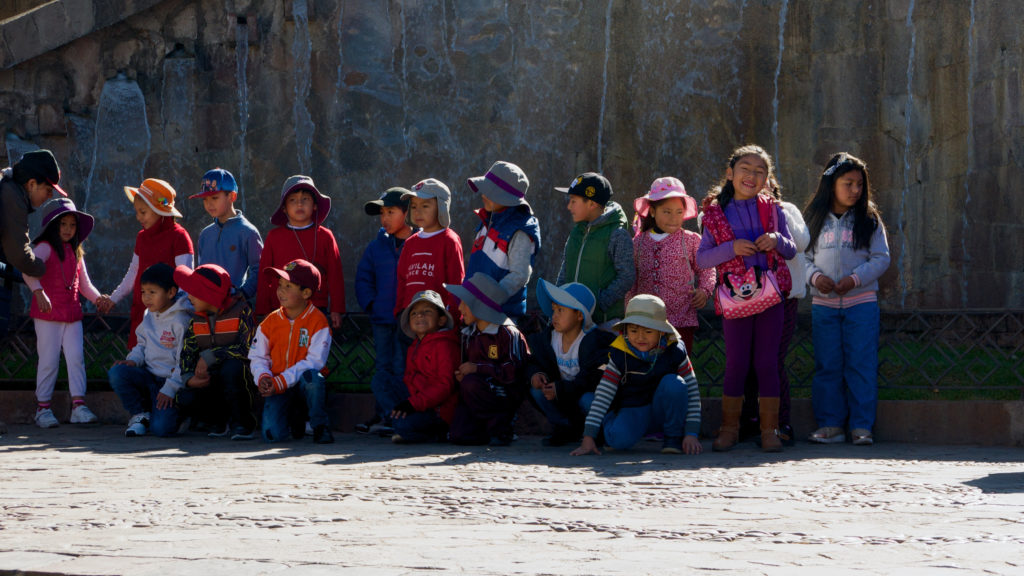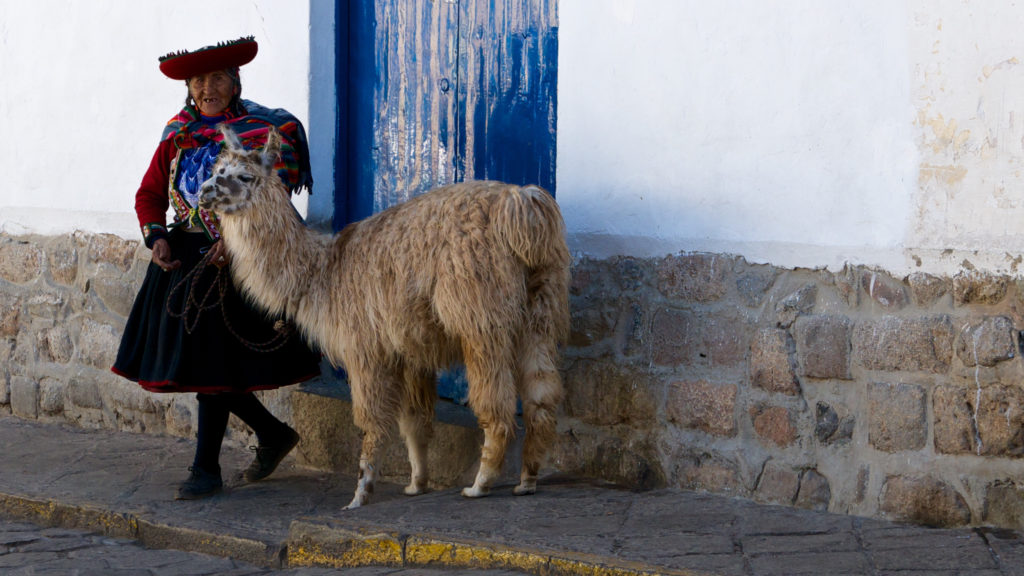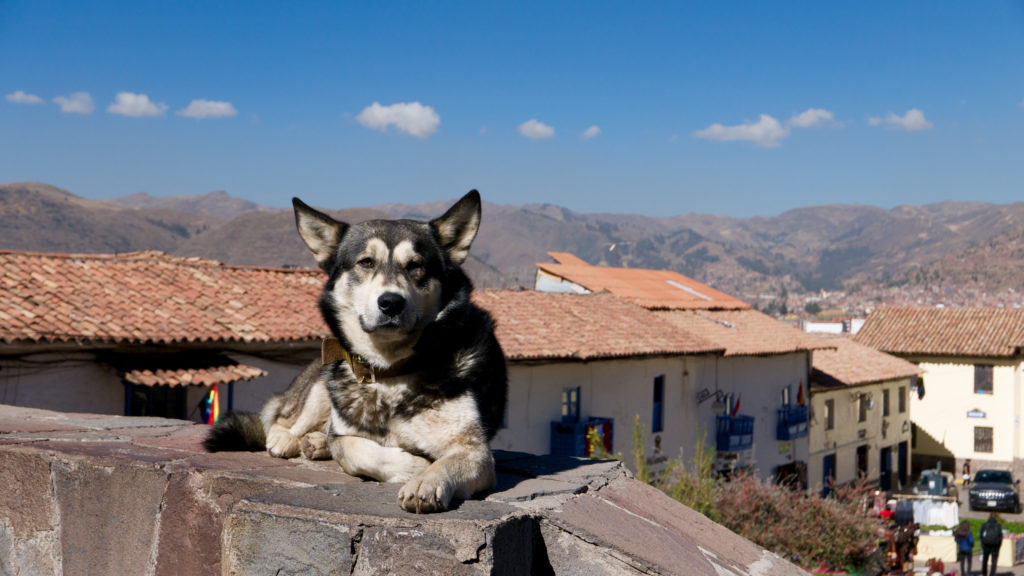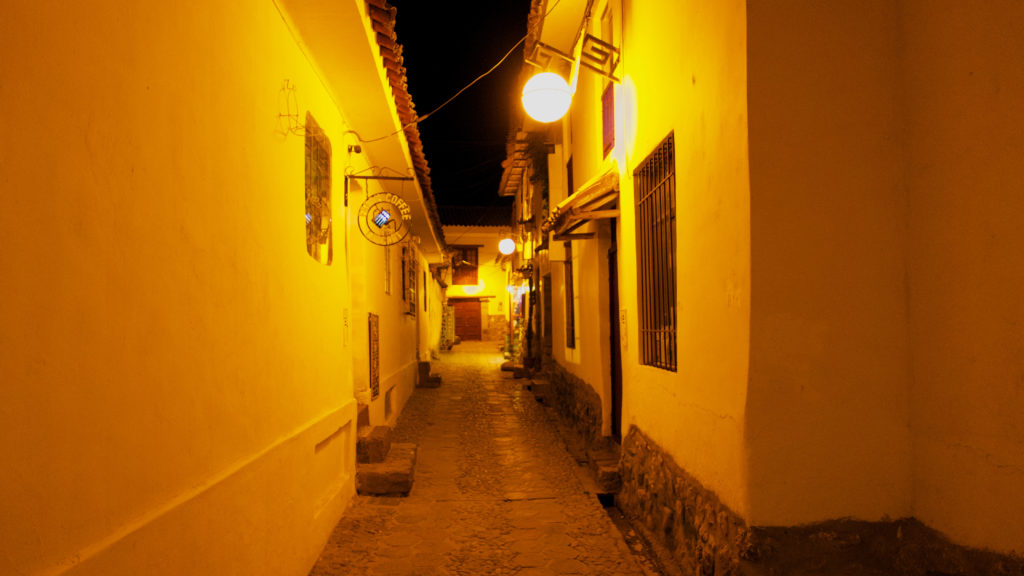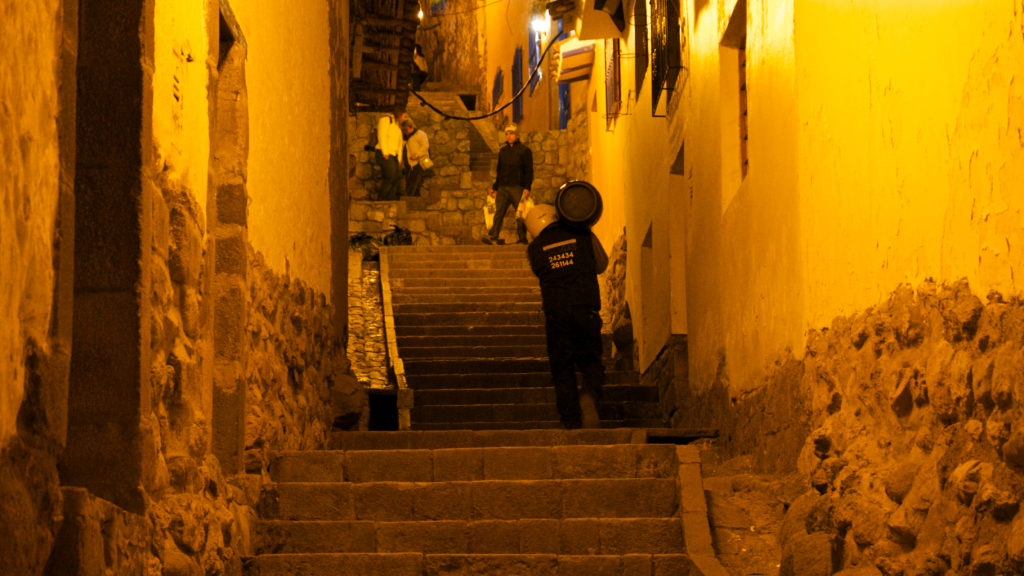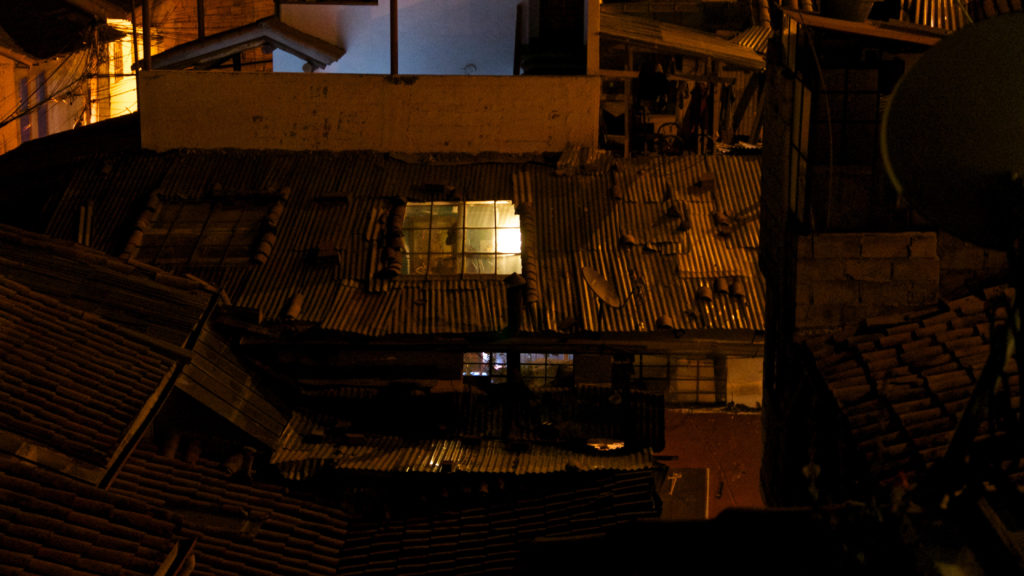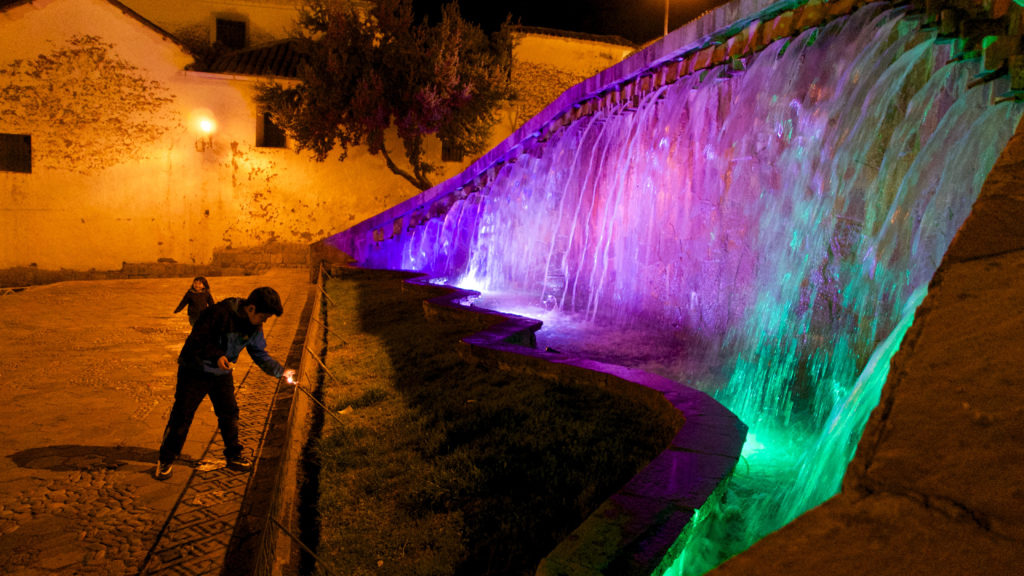Original Volkswagen Beetles were once common on the streets of Latin America. But now these sturdy machines are getting rarer. There are still some stalwart old Beetles on the roads of Peru.
The ones I saw there seemed somehow brawnier than they do in the States. Possibly they have larger tires? For whatever reason, they look to me taller and more capable of going over rough terrain than their North American cousins.
Nearly every Peruvian Beetle I saw had been modified in some way or another, making identification difficult. So I’d be glad if Beetle experts reading this could give me their estimate of the year of each vehicle here and weigh in on the larger tire question.
I saw this one in Cusco. It appeared to be in the best shape of all those I photographed.
This one was parked on a side street in Miraflores. It was one of several I saw that had a roof rack of this design.
This battered bug was driving around Plaza de Armas in Lima Centro.
I saw these four Beetles in Barranco. Being a mecca for hippies, artists, and other Bohemians, it didn’t surprise me to find a fair few old VWs there.
When I was growing up, we had a book of classic Volkswagen ads on our family bookshelf. They were clever and quirky — some of the first ads I actually enjoyed. During my trip to Peru, I remembered this ad and found myself thinking about how common Beetles used to be in Latin America. It says a lot about why these cars were once so popular in certain parts of the world.
